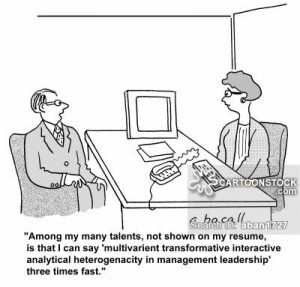Do you sometimes see your project manager as just the “jerk in charge?”
The course material has resonated with me in that I am able to identify the need for project management in certain areas of my workplace where this is lacking; such as developing systems for interdepartmental communication and talent acquisition and retention. But, can this be done in the project/program setting with definitive time lines, goals, budget, planning and execution? I think so!
To examine this further, let’s review two examples of projects that I’ve taken part of during my career in the Association Management Field which starkly contrast with each other. One, the successful implementation of a global acquisition strategy for a stand alone association. The other, an abysmally failed attempted to reorganize the digital file structure of an Association Management Firm representing 40 clients and employing almost 250 people.
The latter project, in my opinion, was the attempt of an executive assistant to prove her worth to the company. Beginning with the notion that a one size fits all file structure would be suitable for different account teams representing vastly different clients from many different industries was mistake number one. The project managers did not take the time to properly assess what the organization’s true needs and wants were and simply operated under assumptions. They may have been doing this to avoid scope creep, which often happens in the Association Management Firm setting because there are so many different agendas that come to the table. However, in this instance where the project largely affected day to day operations, failure to involve the entire organization in the planning process lead to a great amount of internal imbalance.
The next mistake was formulating an unreasonable timeline, which included several hours of pointless meetings and then full days, or even weeks, where entire account teams were taken away from their work and forced to moved files around within the network to comply with the new uniform structure. I was personally affected by this as my account team had a system in place for invoicing which relied heavily on file paths – all of which would have to be changed due to the relocation and none of which was considered or anticipated by the project manager. This was an absolute waste of human capital and client’s suffered because of it.
The successful project was one that was carefully cultivated over a two year period by a project manager with a strategic and forward thinking mindset. The Global Development Department at my current company put together an ROI tool which will allow them to assess how to approach various different markets. Each department had a seat at the table and everyone’s role in the process was considered. While implementation is just now beginning, there is great excitement! A good project manager should be able to generate positive feelings about the project – as opposed to the previous example which generated a lot of groaning and eye rolling. I hope to be able to partake in and lead more successful projects like this one in the future.





